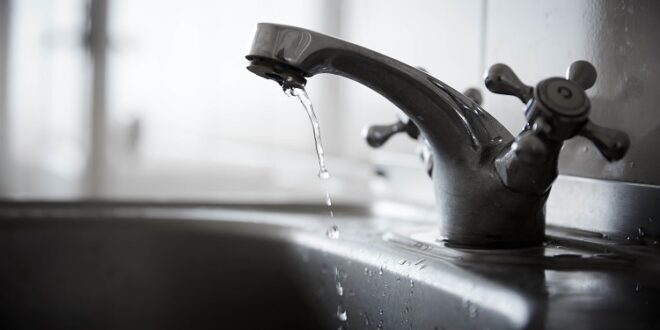A dripping faucet can be a constant annoyance, not to mention a major waste of water. Whether it’s a slow, steady drip or a rapid leak, the sound of water constantly hitting the sink can be enough to drive anyone crazy.
Not to mention, a leaky faucet can also lead to higher water bills and potential damage to your plumbing system. However, the good news is that fixing a leaky faucet is a relatively simple task that can be easily tackled at home.
You don’t need to be a professional plumber to handle this common household problem. With a few basic tools and some simple steps, you can have your dripping faucet fixed and the annoying drip silenced in no time.
In this article, we will guide you through the process of fixing a leaky faucet step by step, and provide some helpful tips to ensure a successful home repair. So say goodbye to that pesky drip and hello to a smoothly functioning faucet with our easy-to-follow guide.
Gather necessary tools and materials.
Before you begin fixing a leaky faucet at home, it is important to gather all the necessary tools and materials to ensure a smooth and efficient repair process. Firstly, you will need a set of basic hand tools such as a wrench, pliers, and screwdrivers.
These tools will come in handy for loosening and tightening various components of the faucet. Additionally, you will require replacement parts such as washers, O-rings, and seals, which are commonly found in faucet repair kits available at hardware stores.
It is essential to have the correct replacement parts that match the specific make and model of your faucet to ensure a proper fit. Lastly, don’t forget to have a roll of plumber’s tape on hand, as it can be used to create a watertight seal. By gathering these necessary tools and materials beforehand, you will be well-equipped to tackle the task of fixing a leaky faucet with ease and confidence.
Shut off water supply valve.
To ensure a safe and efficient repair process when fixing a leaky faucet at home, one of the first steps is to shut off the water supply valve. This valve is typically located underneath the sink or near the water meter.
By turning the valve clockwise, you will effectively stop the flow of water to the faucet, preventing any water damage or unnecessary mess during the repair. It is important to note that different homes may have different types of water supply valves, such as gate valves or ball valves, so familiarize yourself with the specific valve in your home beforehand.
Shutting off the water supply valve is a crucial step in the process of fixing a leaky faucet and should always be done prior to any repair work being undertaken.
Disassemble and clean faucet parts.
Once the water supply valve has been shut off, the next step in fixing a leaky faucet is to disassemble and clean its various parts. This will help remove any sediment or debris that may be causing the leakage. Start by removing the decorative cap or handle of the faucet, which can usually be done by gently prying it off with a flathead screwdriver.
Once exposed, you will find a retaining nut or screw that holds the faucet handle in place. Use an appropriate tool, such as an adjustable wrench or screwdriver, to loosen and remove this nut or screw. With the handle removed, you can now access the cartridge, valve, or washer, depending on the type of faucet you have.
Carefully remove these components, taking note of their order and orientation for reassembly. Clean each part thoroughly using a mild detergent or vinegar solution, ensuring all residue and buildup are removed. Use a soft brush or cloth to gently scrub away any stubborn grime.
Once cleaned, rinse the parts with water and dry them completely before reassembling the faucet. Disassembling and cleaning the faucet parts is a crucial step in resolving a leaky faucet, as it helps restore proper function and prevents further dripping.
Replace worn-out washers and O-rings.
To ensure a long-lasting and effective repair, it is crucial to replace worn-out washers and O-rings in your faucet. These small components play a critical role in preventing leaks by creating a tight seal. Over time, constant use and exposure to water can cause these washers and O-rings to deteriorate, resulting in a leaky faucet.
To replace them, carefully remove the old washers and O-rings from their respective positions, making note of their size and shape for accurate replacement. It is advisable to bring the old parts to a hardware store to find the exact match. Install the new washers and O-rings in their designated spots, ensuring a snug fit.
This simple yet essential step will effectively eliminate leaks and restore the proper functioning of your faucet. Remember to reassemble the faucet in the reverse order and test for any remaining leaks before fully reactivating the water supply.
Reassemble and test for leaks.
After successfully replacing the worn out washers and O-rings, the next step in fixing a leaky faucet is to reassemble the various components and conduct thorough testing for any remaining leaks. Carefully reattach the faucet handle, ensuring it is properly aligned with the valve stem.
Tighten any screws or bolts that secure the handle in place, but be cautious not to overtighten, as this may cause damage. Once the handle is securely fastened, reattach the aerator, spout, and any other removed parts. Ensure each component is properly aligned and tightened to prevent any potential leaks.
With the faucet fully reassembled, turn on the water supply and observe carefully for any signs of drips or leaks. Run both hot and cold water, adjusting the handles as necessary, to thoroughly test the faucet’s functionality. If any leaks persist, double-check the installation of the washers and O-rings, making sure they are seated correctly.
By meticulously reassembling and conducting thorough testing, you can ensure a successful and long-lasting repair, achieving a drip-free faucet in no time.
Thus, a leaky faucet may seem like a minor issue, but it can lead to significant water waste and costly repairs if left unaddressed. By following the simple steps outlined in this guide, you can easily fix a leaky faucet at home and save yourself time and money in the long run.
Remember to regularly check and maintain your faucets to prevent future leaks and keep your home running smoothly. With a few simple tools and some basic knowledge, you can become a DIY plumbing pro and say goodbye to dripping faucets for good.
 HammBurg Be informed with latest news, reviews, entertainment, lifestyle tips, and much more.
HammBurg Be informed with latest news, reviews, entertainment, lifestyle tips, and much more.




